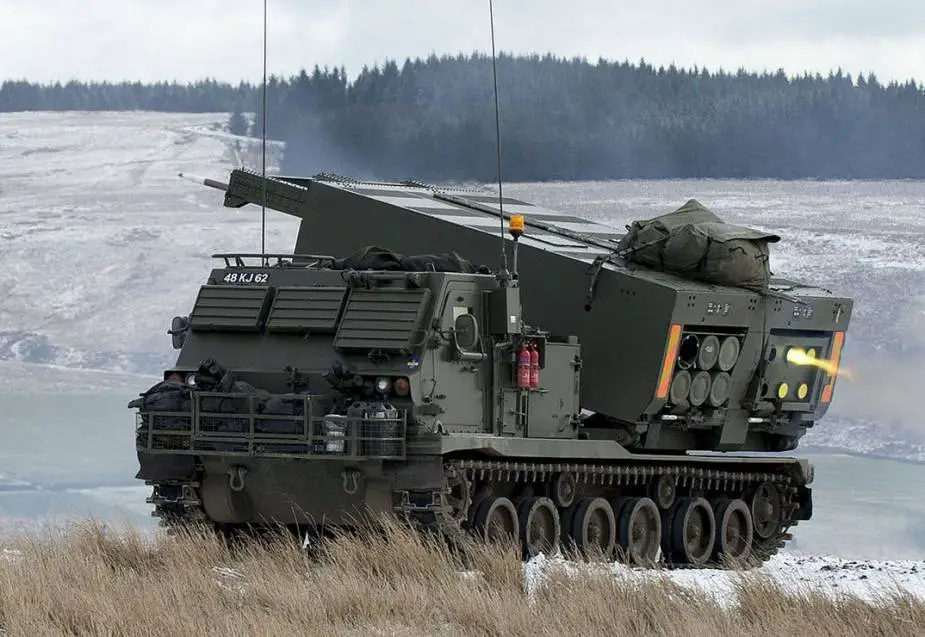The UK Defence Security and Industry Strategy (DSIS) builds on the outcomes of the Integrated Review and the Defence Command Paper. DSIS provides the framework to work with industry, drive innovation and improve productivity to ensure the UK continues to have a world-class defence industry to underpin national security and drive prosperity and levelling up across the UK.
Follow Army Recognition on Google News at this link

British Guided Multiple Launch Rocket System (GMLRS) (Picture source: Cpl Jamie Peters [OGL], via Wikimedia Commons)
As set out in the Defence Command Paper, the UK Army will receive significant investment in order to become more agile, integrated, lethal and expeditionary, investing an additional £3bn in new Army equipment on top of the more than £20bn previously outlined over a decade. Based on these investments and the opportunities that Army modernisation offers, the DSIS identifies that now is the time to adopt a new approach and deliver land forces that are consistently and continually ahead of the threat. To do this a Land Industrial Strategy will be developed over the coming year. This will reset the relationship with the industry, providing transparency and confidence, to enable investment. This is particularly important at a time when the Army is committed to its extensive modernisation and transformation plan. By enabling industry investment in military capability and diversifying it across national regions, the Land Industrial Strategy will directly support 10,000 jobs across the UK with a further 10,000 jobs indirectly supported.
Along with notable investment in Challenger 3 MBT and the Guided Multiple Launch Rocket System (GMLRS), the entry into service of Ajax and Boxer in the next four years will mark a transformation in land combat systems. The Boxer programme has seen £2.8bn committed to the delivery of over 500 vehicles to the British Army. The Boxer family will be made up of four variants: an Infantry Carrier; a Specialist Carrier; a Command Vehicle; and an Ambulance. Much of the fleet is planned to be built in Telford and Stockport by main contractors RBSL and WFEL, supported by a nationwide supply chain that will secure around 1000 jobs nationwide and create an ambitious UK apprenticeship scheme. The aim is to have the first vehicles in service in 2023. Investment will promote prosperity, targeting an additional £6 Billion in export sales – effectively doubling the UK’s share of the £45 billion addressable market.
Our vision is for an innovative, productive and globally competitive land industrial and technology segment in the UK that can export UK products, collaborates domestically and internationally on key Defence projects, and contributes to our national prosperity.
This new LIS will include a longer-term approach to our capability investment planning and incorporate more regular upgrades into capability management contracts. Urgent exploration with the industry of potential new partnership approaches involving prime contractors, system providers and new, innovative partners. It will also include a broader focus on mission systems and the networks, and a rationalisation of current and future fleets. This approach will deliver the competitive advantage our front-line forces need, by providing access to cutting-edge capabilities on a more continuous and enduring basis.















